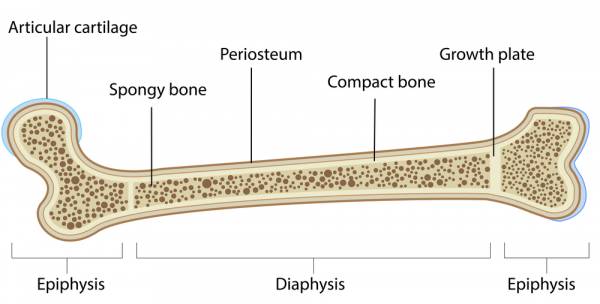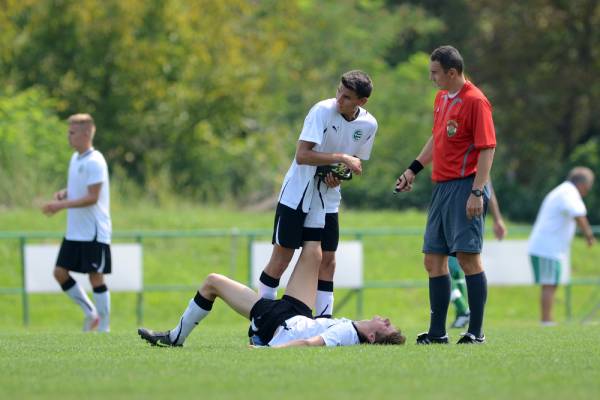Weekdays and weekends are finally filled with spring sports for youth athletes, but what happens if a child or teen is not conditioned for the amount of practices and competitions the team has scheduled?
This article will define repetitive stress injuries, discuss their causes, address the means to prevent these injuries, and identify the common types of repetitive stress injuries.
Stress Injuries, Defined
Repetitive stress injuries (RSIs) occur when too much stress is repeatedly placed on a part of the body, resulting in inflammation, muscle strain, or tissue damage. RSIs are also referred to as overuse injuries, and can include over one hundred different kinds of injuries and illnesses that can vary in severity.
Previously thought to only be an adult injury, repetitive stress injuries are on the rise for youth athletes. But, unlike adult repetitive stress injuries, youth RSIs are usually associated with sports-related activity. According to The Journal of Athletic Training, overuse injuries in youth are a significant healthcare concern, with fifty percent of pediatric patients admitted to sports medicine clinics for chronic injuries.
“RSIs occur gradually, when a repetitive motion is repeated so often that the body does not have enough time to heal between playing.”
RSIs occur gradually, when a repetitive motion is repeated so often that the body does not have enough time to heal between playing. Overuse injuries can affect muscles, ligaments, tendons, bones, and growth plates. For adolescent athletes, overuse injuries most often occur at the growth plates, which are the areas of developing cartilage where bone growth occurs.
The growth plates are weaker than nearby ligaments and tendons, so repetitive stress can lead to injury of the growth plate. The areas most affected by RSIs are the elbows, shoulders, knees, and heels, all of which contain growth plates. While overuse injuries can occur in any sport, some RSIs are more common in certain sports. One of the more common known overuse injuries for baseball players is Little League elbow, which is caused by a repetitive throwing motion.
The Cause of RSIs
The Journal of Athletic Training states that an estimated fifty percent of overuse injuries in physically active children and adolescents are preventable, if people were only aware of the causes. There are several commonly recognized causes of RSIs, and it is essential that coaches, trainers, parents, and athletes are aware of these.
One of easiest preventable causes of RSIs is using the wrong equipment for the sport or using equipment that does not fit properly. As discussed earlier, adolescent athletes seem to be the most susceptible to RSIs, largely due to adolescent growth spurts. Therefore, equipment needs to be checked regularly, to determine if it is in good condition and if the equipment still fits properly.
“The areas most affected by RSIs are the elbows, shoulders, knees, and heels, all of which contain growth plates.”
Poor nutrition can also lead to RSIs, and conversely, good nutrition plays a pivotal role in preventing RSIs. Proper nutrition is essential for developing strong bones and muscles, for the repair and recovery of muscles, and for providing fuel for athletic performance.
In addition, coaches and trainers need to be aware of RSIs due to training errors (quick jumps in intensity or increases in weights) and/or excessive training. Coaches need to be exceedingly aware of poor mechanics – these are the leading cause of RSIs. Improper mechanics and techniques can put pressure on tendons, bones, and joints, and when done repeatedly, can lead to a variety of overuse injuries.

The Types Of Injury
According to Dr. Mary L. Gavin of Kids Health, there are several common types of overuse injuries:
- Sever’s disease is one of most common causes of heel pain in youth athletes and often occurs during adolescent growth spurts.
- Bursitis is inflammation of the bursa, which is a fluid-filled sac that acts as a cushion for a joint.
- Carpal tunnel syndrome is swelling that occurs inside a narrow “tunnel” formed by the bone and ligament in the wrist.
- Epicondylitis is a condition characterized by pain and swelling where the bones join at the elbow.
- Osgood-Schlatter disease is a common cause of knee pain in teens undergoing a growth spurt, causing inflammation where the tendon from the kneecap attaches to the shinbone.
- Patellofemoral syndrome is a softening or breaking down of kneecap cartilage.
- Shin splints are pains along the shin or front of the lower leg.
- Stress fractures are tiny cracks in the bone’s surface caused by rhythmic, repetitive overloading.
- Tendonitis is the tearing and inflammation that occurs in the tendons.
The Prevention of RSIs
Yes, RSIs can be prevented. While the coach or trainer is responsible for the conduct of practices and games, the parent and the athlete also have a responsibility to help prevent overuse injuries. Dr. Gavin offered these suggestions to young athletes:
- Before any sports season, have a physical examination and address any issues or concerns with your doctor.
- Always warm up and cool down with appropriate stretching exercises.
- Wear the proper clothing and equipment for your sport, including safety gear.
- Make sure equipment fits properly and is used correctly.
- Drink water before, during, and after your workouts.
- Vary your day-to-day activities, rather than doing the same activity every day.
- If you are experiencing symptoms such as pain, swelling, numbness, or stiffness, stop and seek medical attention.

So, What’s the Good News?
There is good news. While RSIs can be serious, the risks of these injuries can also be greatly decreased for youth athletes. It is the responsibility of all – coaches, trainers, parents, and athletes – to recognize the causes of RSIs, take measures to help prevent them, and accept responsibility for their prevention, so that youth overuse injuries can be drastically reduced.
Read more on youth and development:
- More Than Just A Funny Bone: Preventing Growth Plate Injury
- Severs Disease: The Pain of Adolescent Growth Spurts
- 7 Reasons Youth Athletes Need to Strength Train
- What’s New On Breaking Muscle Today
References:
1. “How are Overuse Injuries Different than Other Injuries?” Stopsportsinjuries.org, Rosemont, IL. Accessed 5 April 2015.
2. “National Athletic Trainers’ Association Position Statement: Prevention of Pediatric Overuse Injuries,” Tamara C. Valovich McLeod, et al. Journal of Athletic Train. 2011 Mar-Apr; 46(2): 206–220. doi:10.4085/1062-6050-46.2.206. Accessed 5 April 2015.
3. “Overuse Injuries in Children,” Reviewed by members of POSNA (Pediatric Orthopaedic Society of North America). December 2012. Accessed 5 April 2015.
4. “Repetitive Stress Injuries,” Reviewed by Mary L. Gavin. Jan 2014. Accessed on 6 April 2015.
Photos courtesy of Shutterstock.






